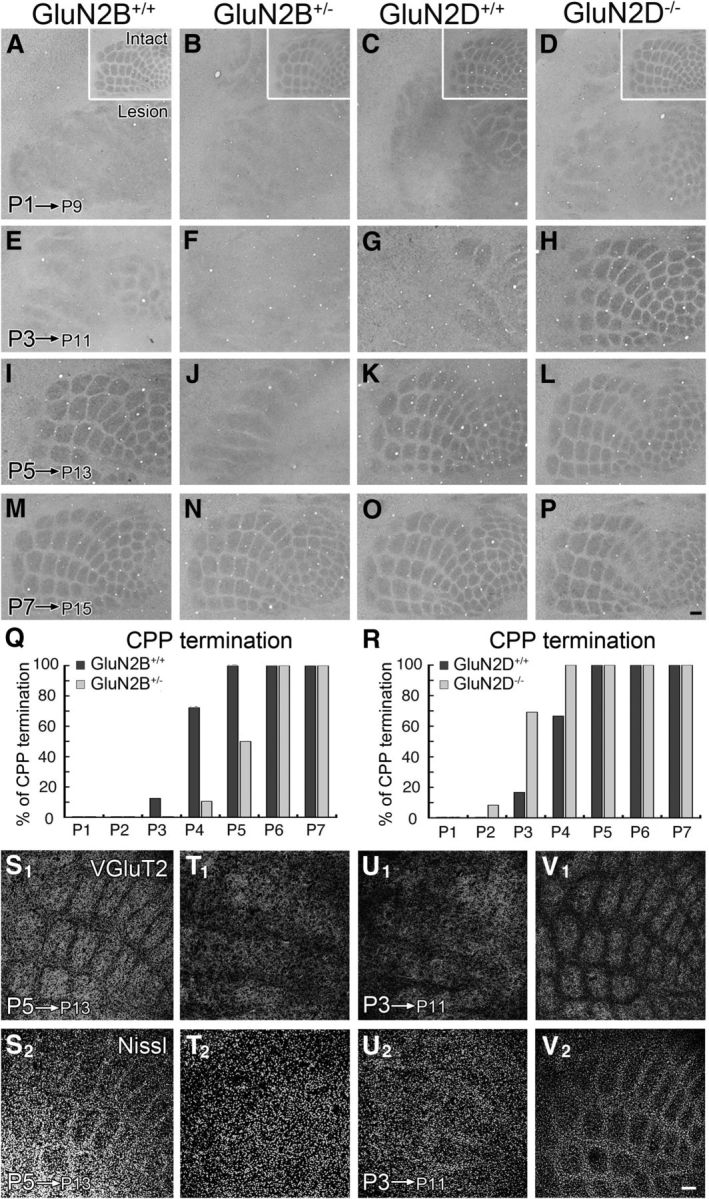Figure 3.

Termination of lesion-induced critical period plasticity in cortical barrels is delayed in GluN2B+/− mice and advanced in GluN2D−/− mice. The right infraorbital nerve was transected at P1 (A–D), P3 (E–H), P5 (I–L), or P7 (M–P), and cytochrome oxidase histochemistry was applied 8 d later. A–P, The contralateral barrel cortices. The ipsilateral cortices are shown in insets (A–D). Q, R, Bar graphs representing 1 day delay of critical period plasticity (CPP) termination in GluN2B+/− mice (Q) and 1 day advance in GluN2D−/− mice (R). The number of mice examined is listed in Table 3 (top). S–V, Opposing temporal shift in CPP termination between GluN2B+/− and GluN2D−/− mice is reproduced by VGluT2 and Nissl staining. The right ION was transected in GluN2B+/− and control mice at P5 (S,T) or GluN2D−/− and control mice at P3 (U, V), and flattened contralateral cortices were subjected to VGluT2 and Nissl staining 8 d later. Critical period plasticity is terminated at P5 in control mice (S), but not in GluN2B+/− mice (T). By contrast, it is terminated as early as P3 in GluN2D−/− mice (V), but not in control (U) mice. Scale bars, 100 μm.
